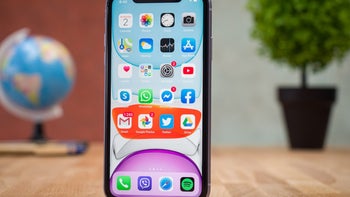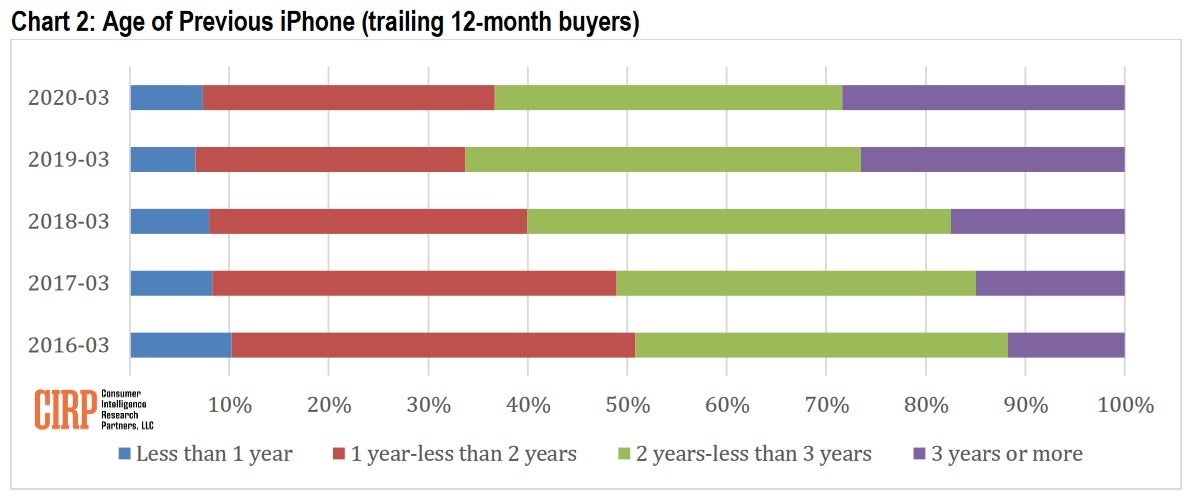Apple iPhone 11 follows the path of its predecessor in the U.S.

In 2018, Apple released the iPhone XR which didn't have all of the bells and whistles of the higher-priced iPhone XS and iPhone XS Max. Of course, that meant that it was priced to sell at $749 for the 64GB model. With the longest battery life on an iPhone (prior to the launch of the iPhone 11 Pro Max), the iPhone XR became the top-selling phone in the world last year. It also was the most popular iPhone model in the U.S.
Last year, the successor to the iPhone XR was launched, the iPhone 11. Similar to the previous model, the iPhone 11 features a 6.1-inch LCD display and one less camera on the back than the premium "Pro" models. It doesn't have the best battery life on an iPhone, but starting at $699 for the 64GB version, it garnered 39% of all U.S. iPhone sales in 2019 according to a new report from Consumer Intelligence Research Partners (CIRP).
Apple iPhone 11 made up 37% of U.S. iPhone sales during the first quarter
CIRP's new data covers the first quarter of 2020 (January-March) and it says that in the states, the iPhone 11 family accounted for 66% of total iPhone sales in the U.S. during that time period. The iPhone 11 itself was responsible for 37% of U.S. iPhone sales during the first quarter of this year. That is pretty much in line with the 69% of total iPhone sales that the 2018 models grabbed during the last quarter of 2019 and the 39% share of those sales that belonged to the iPhone XR.

The Apple iPhone 11 family made up 66% of total U.S. iPhone sales during the first quarter
Josh Lowitz, CIRP Partner and Co-Founder noted "iPhone 11 is the dominant model in the lineup. Not surprisingly, it took the place of last year’s iPhone XR as the most popular phone. The more expensive iPhone 11 Pro and 11 Pro Max together improved share, relative to the similar top-of-the-line iPhone XS and XS Max a year ago. Notably, the oldest and lowest-priced iPhone 8 and 8 Plus had a relatively small 13% share of sales, weaker than the phones in the same positions last year. The release of the new price leader iPhone SE and likely retirement of the 8 and 8 Plus should alter the sales mix and put even further emphasis on newly released models in the upcoming quarter."
CIRP also released data showing that iPhone owners are not upgrading to the newest model as quickly as they used to. For example, four years ago only 12% of iPhone users kept their handset for three years or longer before upgrading. The most recent information collected during the first quarter of this year shows that 28% of iPhone users are keeping their device for three years or longer before moving on to the newest model. This is the reason why Apple began working on enhancing its Services unit which is expected to bring in close to $50 billion in revenue for the current fiscal year. It was a smart move to rely on the recurring subscription fees from Apple Music, Apple News+, and Apple Arcade. The number of active iPhone units is roughly 1 billion.

More Apple iPhone owners are holding on to their phones for three years or longer
Mike Levin, CIRP Partner, and Co-Founder said, "We see clearly how iPhone owners now keep their phones for increasingly longer time. In the most recent quarter, 28% of buyers kept their old phone for three years or more, compared to only 12% four years ago. A steady high single-digit percentage of iPhone buyers upgrade their phones each year. So, the good news for Apple is, consumers increasingly buy mostly the newest, more expensive phones. But, they now keep those phones for a much longer time, well past the typical two years from a few years ago. This slows the upgrade cycle and reducing (sic) unit demand in a saturated market."










Things that are NOT allowed: